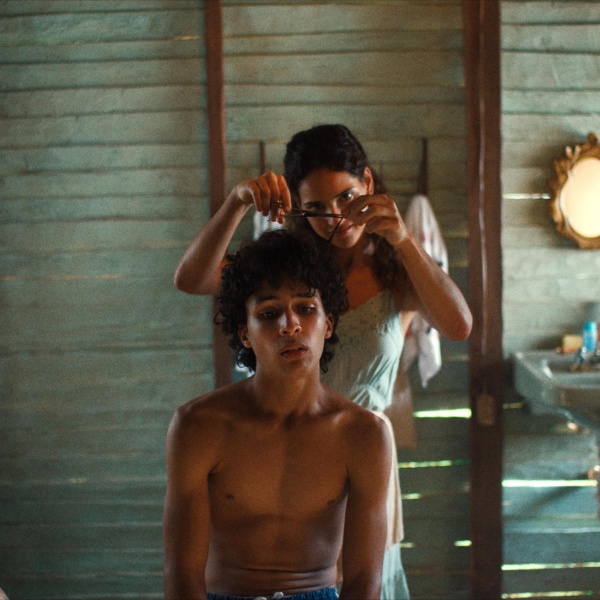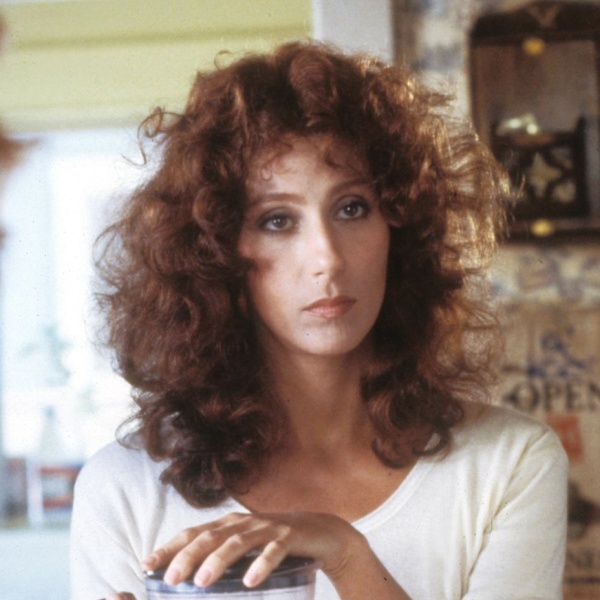
In “Hanna,” Academy Award nominee Saoirse Ronan graduates to the next stage of her career, the one that all “respected actors” reach — the action stage, where her piercing looks and astute natural intelligence are replaced by kicks, punches and improbable stunts. The anomaly, of course, is that Ms. Ronan has become a remarkably accomplished, borderline preternatural performer at a young age, and so the action phase of her career — admittedly, a brief tour as opposed to the extended sojourn other actresses might enjoy — has arrived fairly early. Such is the natural gimmick at the heart of “Hanna,” one that audiences should find familiar by now: the little girl with wolf’s teeth and bear’s claws.
The narrative is so quick that all we really learn about the taciturn youngster is that, under the care of her possibly dangerous father, Erik (Eric Bana), she has honed her self-defense skills in complete isolation far from civilization. Her neighbors are not fellow schoolchildren, but instead snowy trees, log cabin fires, and wild animals. Her working knowledge of society comes from not only the few Brothers Grimm fairy tale books and encyclopedias that Erik trusts, but also through the lies he plants: the only friends she has are in the stories he tells her, to be repeated verbatim should she be held captive. Daddy, it seems, is raising a teenage assassin.

Soon, Hanna is ready. Her CIA lead target, Marissa Wiegler (Cate Blanchett), is under the impression she is the hunter and not the prey. The audience braces for a collision course, but Hanna, freed of the demands of daily training, just might start to appreciate her newfound freedom. So begins a most unconventional journey into adulthood. Friendships, boys and self-consciousness await, as do fisticuffs. It’s one of those coming of age stories.
Director Joe Wright, he of the oversized emotions in “Pride And Prejudice” and “Atonement,” brings a surprising respect for the audience into this latest endeavor. His direction is pitched to allow for every sequence to feel like an action scene, with a tense push-pull between this trio of characters and the peripheral boogeymen on the margins of the story. He uses the action sequences to expertly reveal story and character, shying away from anything considered to be expository language within the dialogue in the script penned by Seth Lochhead and David Farr.
But it would be impossible to avoid saying that “Hanna” isn’t about much aside from the rush of death, the thrill of the kill. Despite some scattershot blows against the same sort of questionable hiring practices used by the American government in fare like the “Bourne” pictures (with a small dollop of medical sci-fi), “Hanna” never seems to make a point about actual lives lost due to the ever-clanging machines of the military-industrial complex. In a way, the film is borderline miserable, utilizing risible violence (with “tasteful” PG-13 cutaways) in favor of actual humanity. This is not an irresponsible political viewpoint as much as it’s just a dull and repetitive one.
But Ronan’s performance gives depth not normally found in this type of cynical killing-machine film. Her initial reactions to the wonders of girlhood with a friend of the same age (an excellent and charming Jessica Barden who awakens Hanna’s senses in surprising ways) encapsulate both the human joy of finding someone with whom to share, as well as the horror of being someone not at home within their skin. The movie never keeps pace with her work, instead focusing on her juvenile hopelessness and unquestioning acceptance of the cycle of violence. Appropriately, “Hanna” is bookended with naked acknowledgments of our very existence as wild animals, a “truth” that clashes with the pristine sterility of what we’ve seen in Wiegler’s suffocating CIA world.
Still, as much “Hanna” is off ideologically, and is paradoxically filled with enjoyable one-note fairy tale archetypes (the evil witch, the mad hatter, etc.), Wright understands that the action takes precedence over logic and theme.It’s a double-edged sword, risking giving us the sense of an inorganic universe, but it’s one that pays off in delivering what may be the most conventionally entertaining guns-and-fisticuffs actioner of the last few years. Those action sequences are tightly edited and shot, and deliver in spades — despite what’s been said about sharing fight choreographers, it’s the actual, clear-headed antithesis to the Paul Greengrass school of action.
While propulsion and momentum obscure theme and reason, Wright proves he is seemingly the current master of the single-shot virtuoso take, and keeps the action in-frame, frequently yielding to unbroken takes to emphasize the kinetic nature of his performers and stunt team. Special mention must also go to the electronic score from The Chemical Brothers, who craft a soundscape that gives the action a necessary aural kick and a sinister playfulness that the film’s po-mo tone can’t quite capture (though it should be said, our headline may be misleading, the Chemical Bros score is not dated and thankfully puts as much emphasis on ethereal atmosphere and mood as it does forcible beat). Wright’s sense of invention allows for the constantly-changing visual scheme to mimic a number of The Chemical Brothers’ acclaimed music videos edited together. Which has its limitations — the film feels like a spacious art project as opposed to a full-throttle action picture at times. But considering the alternatives lately (“Salt,” “Transformers“), we got lucky. [B]

